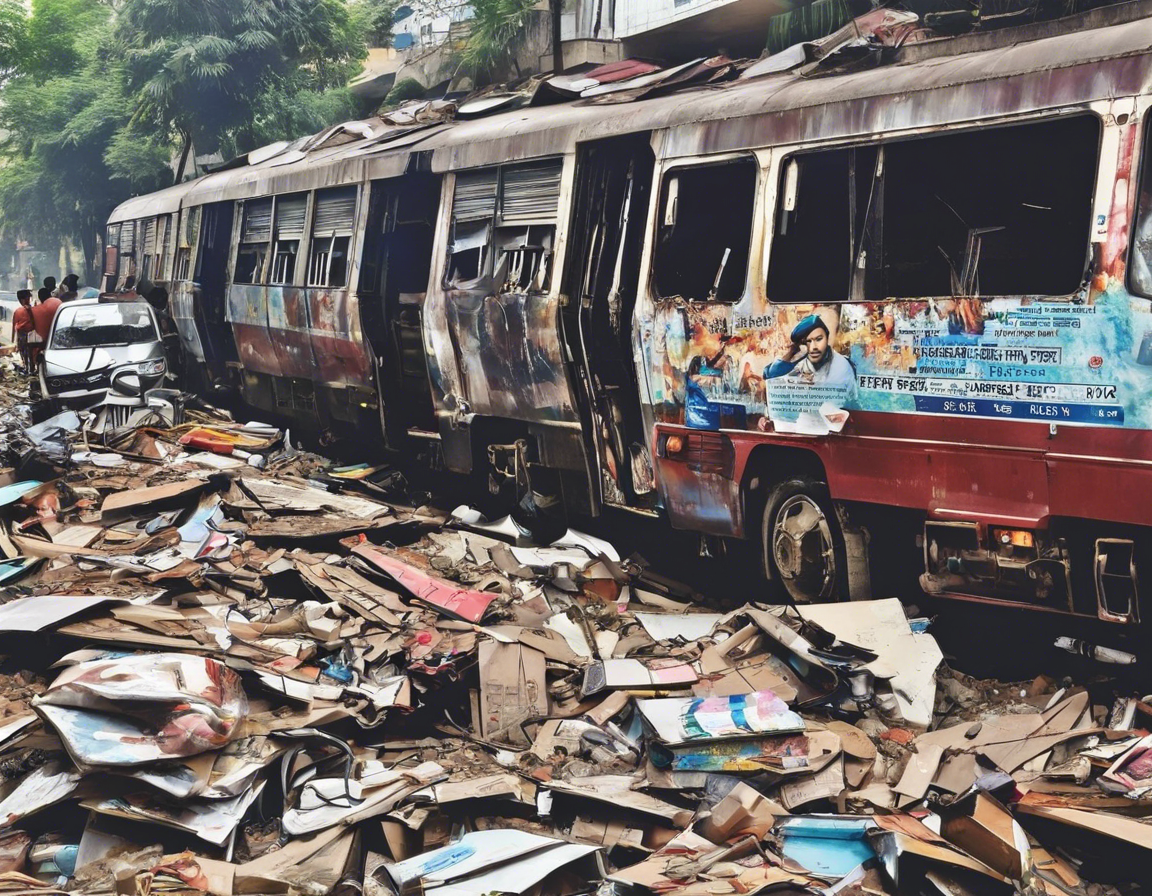
Tragic Mumbai Hoarding Accident: A Preventable Disaster
The recent hoarding collapse tragedy in Mumbai, India, which resulted in the loss of multiple lives and severe injuries to several others, has once again brought the spotlight on the importance of ensuring public safety and implementing stringent regulations in urban spaces. Hoardings, also known as billboards or advertising signage, serve as a common feature in cities worldwide. While they are essential for advertising and communication purposes, hoardings can pose serious risks if not properly installed and maintained. In the case of the Mumbai incident, it was reported that the hoarding collapsed due to heavy rainfall and strong winds, highlighting the need for proper engineering, maintenance, and regulatory oversight to prevent such disasters.
Importance of Structural Integrity in Hoardings
Hoardings are typically made of various materials such as metal, wood, or PVC, and are installed at height to improve visibility. The structural integrity of hoardings is crucial to ensure they can withstand external forces such as wind, rain, and other environmental factors. Inadequate design, poor-quality materials, lack of regular maintenance, and improper installation can all contribute to hoarding collapses and subsequent accidents.
Regulatory Oversight and Compliance
Municipal corporations and local authorities play a significant role in regulating the installation and maintenance of hoardings in urban areas. It is essential for cities to have clear guidelines and regulations regarding the size, height, location, and structural requirements of hoardings to ensure public safety. Regular inspections and enforcement of these regulations are crucial to prevent accidents and hold accountable those responsible for non-compliance.
Safety Measures for Hoarding Installation
When installing hoardings, certain safety measures should be followed to mitigate risks and ensure structural stability:
-
Professional Installation: Hoardings should be installed by licensed professionals with experience in structural engineering to ensure they meet safety standards.
-
Regular Inspections: Periodic inspections should be conducted to check for any signs of structural weakness, damage, or wear and tear.
-
Weather Considerations: Hoardings should be designed to withstand local weather conditions, such as heavy rain, strong winds, and extreme temperatures.
-
Clearance Requirements: Hoardings should be installed at a safe distance from roads, pedestrian walkways, and buildings to prevent any potential hazards.
Preventative Maintenance for Hoardings
To prolong the lifespan and ensure the safety of hoardings, regular maintenance and upkeep are essential:
-
Painting and Coating: Regularly paint and coat hoardings to protect them from corrosion, rust, and water damage.
-
Structural Repairs: Address any signs of structural damage, loose fittings, or deterioration immediately to prevent potential collapses.
-
Cleaning and Debris Removal: Keep hoardings clean and free of debris to prevent excessive weight and maintain visibility.
Public Awareness and Reporting Mechanisms
It is also important to raise public awareness about the potential risks associated with hoardings and encourage reporting of any unsafe or damaged hoardings to the relevant authorities. Citizens should be vigilant and alert authorities in case they notice any signs of instability or danger posed by hoardings in their vicinity.
Conclusion
The tragic hoarding accident in Mumbai serves as a sobering reminder of the importance of prioritizing public safety and ensuring strict adherence to regulations and safety standards in urban spaces. By implementing proper engineering practices, regular maintenance protocols, and robust regulatory oversight, cities can prevent such disasters and create safer environments for their residents and visitors.
Frequently Asked Questions (FAQs)
- What are hoardings, and why are they used in urban areas?
-
Hoardings are large advertising signs commonly used in urban areas to display messages, advertisements, and information to a wide audience.
-
What are the common causes of hoarding collapses?
-
Hoarding collapses can be caused by factors such as poor structural design, substandard materials, lack of maintenance, extreme weather conditions, and improper installation.
-
How can cities enhance hoarding safety measures?
-
Cities can enhance hoarding safety measures by implementing clear regulations, conducting regular inspections, enforcing compliance, and raising public awareness about hoarding safety.
-
Who is responsible for the maintenance of hoardings in urban areas?
-
The owners of hoardings, advertising agencies, and local authorities share the responsibility for the maintenance and safety of hoardings in urban areas.
-
What should I do if I notice a damaged or unsafe hoarding in my neighborhood?
- If you notice a damaged or unsafe hoarding in your neighborhood, report it immediately to the local municipal corporation, authorities, or relevant helpline numbers to ensure prompt action and prevent accidents.